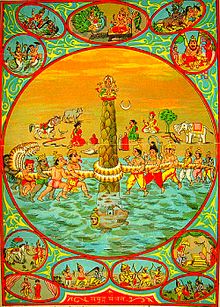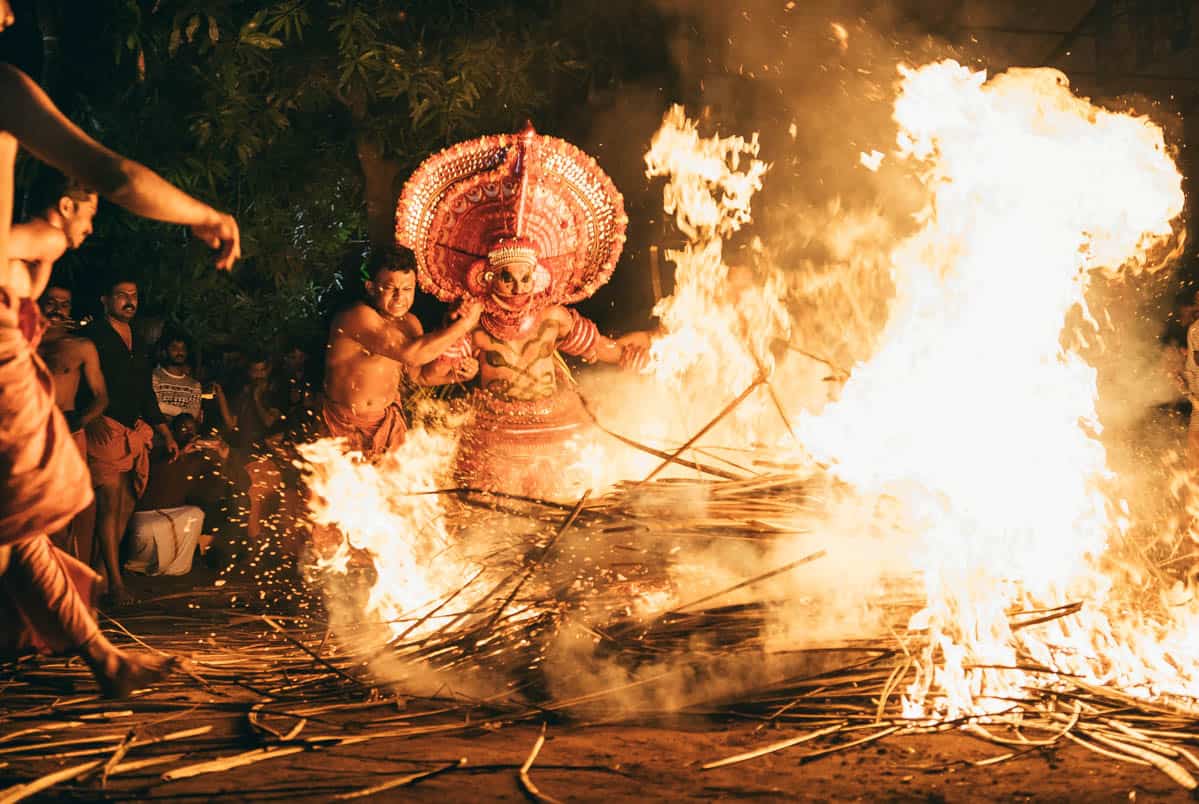"In Buddhism it is held by the Bodhisattvas (divine beings with great compassion, wisdom and power) Avalokiteshvara and Ksitigarbha. It is also seen carried upon the back of the Lung Ta (wind horse) which is depicted on Tibetan prayer flags. By reciting the Dharani (small hymn) of Cintamaṇi, Buddhist tradition maintains that one attains the Wisdom of Buddha, able to understand the truth of the Buddha, and turn afflictions into Bodhi. It is said to allow one to see the Holy Retinue of Amitabha and assembly upon one's deathbed. In Tibetan Buddhist tradition the
Chintamaṇi is sometimes depicted as a luminous pearl and is in the possession of several of different forms of the Buddha.
Dharani - Wikipedia
Within Hinduism, it is connected with the gods, Vishnu and Ganesha. In Hindu tradition it is often depicted as a fabulous jewel in the possession of Vishnu as
Kaustubha Maṇi or as on the forehead of the Naga (Cobra) king called as Naga Maṇi or on the forehead of the Makara. The
Yoga Vasistha, originally written in the 10th century AD, contains a story about the Cintamaṇi."
https://en.wikipedia.org/wiki/Cintamaṇi
_________________________________________
There is supposed to be another Jewel which came into the possession of Lord Krishna. That is
Syamantaka Maṇi (Maṇi means a jewel in Sanskrit). This belonged to the Sun God, who gave ist to one of his devotees, Satrajit, who passed it on to his brother, Prasen. Now Prasen was killed by a lion the lion carried away the jewel. But the lion was killed by the chief of the Bear clan, Jambavanta (who helped Lord Rama during his war with Ravana) and the jewel came to be with Jambavanta.
When his daughter, Jambavanti married Lord Krishna, he gave the jewel to Krishna as a marriage gift. It was said that whichever land possessed this jewel would never encounter any calamities such as droughts, floods, earthquakes or famines, and would always be full of prosperity and plenitude. Wherever the jewel remained, it would produce for the keeper eight
bhāras of gold daily (i.e., approximately 170 pounds or 77 kg) of gold every day (or perhaps it meant that the income of the principality will be equal to the value of 170 pounds of gold every day).

 ) who, according to a legend, seduced some very holy Gaudiya Vaishnava saint, Bilvamangala Thakura. Basically, I don't think this is what the Indian listener got exited about. I asked around the other Indians what "Cintamani" means. One said it meant "jewel of worry" and the others just didn't know. I think there's no point in asking the Krishnas for they don't know anyway.
) who, according to a legend, seduced some very holy Gaudiya Vaishnava saint, Bilvamangala Thakura. Basically, I don't think this is what the Indian listener got exited about. I asked around the other Indians what "Cintamani" means. One said it meant "jewel of worry" and the others just didn't know. I think there's no point in asking the Krishnas for they don't know anyway.


 But it is difficult for me to classify his reaction if I lack the cultural background.
But it is difficult for me to classify his reaction if I lack the cultural background.